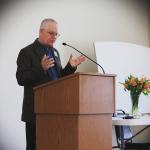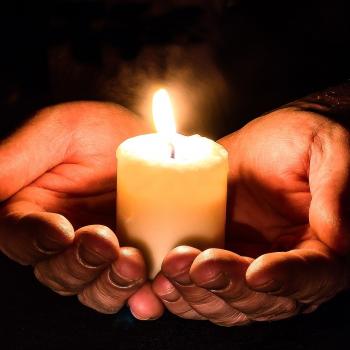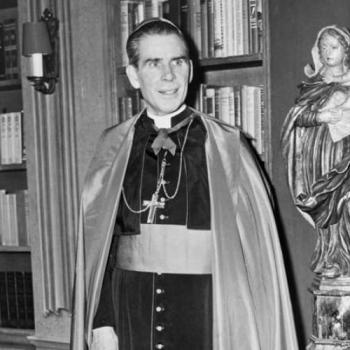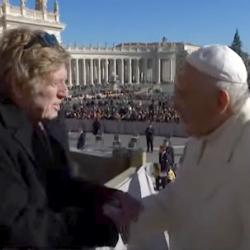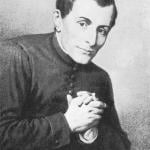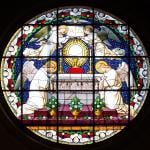From The Catholic News Herald:
Father Joseph Matlak, 31, is celebrating his one-year anniversary of ordination as a priest of the Ukrainian Greek Catholic Church. He has recently been named administrator of the St. Basil Ukrainian Greek Catholic Mission and chaplain of Holy Trinity Middle School.
Father Matlak has a unique priesthood, as he has permission to celebrate the liturgy in three rites: the Byzantine rite and the two forms of the Latin rite. He celebrates Mass in the Extraordinary Form (Latin Mass) at St. Thomas Aquinas Church and in the Ordinary Form (Novus Ordo) at the middle school.
He is also married, as Eastern Rite Catholic married men may be considered for ordination at their bishop’s discretion. Father Matlak and his wife Katie Ann were married in 2014.
Father Matlak expressed that he is grateful to Bishop Peter Jugis and the entire Diocese of Charlotte for “their unparalleled cordiality and hospitality. I have been received as though being one of their own, who works and strives together with them for the same goal, the glory of God and the good of His people!”
Recently we asked Father Matlak to share his vocation story with the Catholic News Herald:
CNH: Can you explain what it means to be tri-ritual, to be able to celebrate the Mass in three rites?
FATHER MATLAK: I am a canonically a priest of the Ukrainian Greek Catholic Church, the largest of the Eastern Churches in full communion with the Church of Rome. I have also received faculties from the Congregation of the Eastern Churches to celebrate in the Latin rite. This means that I have permission to celebrate in both the Byzantine rite and Latin rite, of which there are two forms – the Ordinary Form and the Extraordinary Form (Missal of 1962). As a result, I find myself celebrating the Liturgy/Mass in three different rites or forms, depending upon the place and situation. This experience is deeply enriching my priesthood, imbuing within me a spirit of the catholicity of the Church.
CNH: What it is like to be a married priest?
FATHER MATLAK: According to the tradition of the Eastern Churches, a candidate for major orders has to be married before ordination to the diaconate. It is not that “priests can get married,” as is commonly assumed, but rather that married men are ordained to the priesthood. In Eastern Christianity, monasticism is a vocation held in very high esteem. Those who discern celibacy commonly seek out a monastic community. However, after having met my wife in church, I realized that God was calling me to marry, and specifically to marry her. Thereafter, the bishop decides whether or not to ordain a married man. I may never have been ordained, and so the important thing was to discern whether or not I was called to marriage first.My wife had not grown up in the Eastern Churches, although she was aware of them through her experience at the Franciscan University of Steubenville. Ironically, she never thought she would be married to a priest. She recalls at one point emphatically telling the wife of a priest that she would never do so! As it turned out, she became my biggest champion, often encouraging me whenever I wanted to doubt that I even had a priestly vocation. (I have found that this is a common story among the wives of our priests and deacons.)
The most important thing to understand is that this is a divine vocation. It is not enough simply to “find a wife” before ordination, but rather to find the right person to marry. In our case, we both began praying for our future spouses at around the same time, and specifically to the Mother of God. While not being a priest herself, the wife of the priest certainly shares to some extent in the priestly life and ministry of her husband. She is traditionally an esteemed and revered member of the parish, and very often takes on positions of leadership and service in accordance with her abilities and talents. Therefore, it is no wonder that the wife of a priest has traditionally been given a title (Pani Dobrodyka, Pani Matka, Matushka, Presbytera, Khouria).
There’s much more. Read it all.
Photo: Deacon Matthew Hanes

